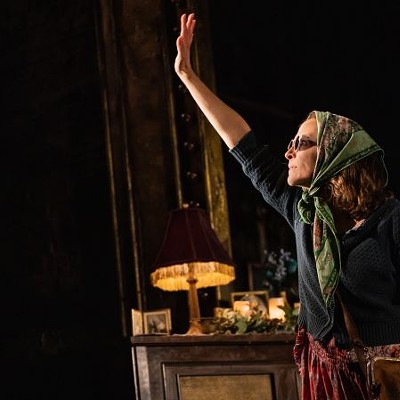One of my very first gifts from the world of "high" fashion was a bright turquoise woven belt with a gold buckle, and on that buckle was the signature of one Pierre Cardin. Today is Cardin's 89th birthday, and I set out to find out a few things about this French designer who was born and raised in Italy. Luckily for me his website provides a detailed, step-by-step biography of his life starting in 1945 when the designer arrived in Paris to begin his fashion career. Apparently nothing of importance happened to Pierre before the age of 23.
Cardin began his career in Paris, working with designers such as Jeanne Paquin and Elsa Schiaparelli, but began working for Christian Dior in 1946, when Dior was brand new. Cardin was known primarily for costume and mask design during this period, but in 1953 he presented his very first ladies' collection, and in 1954 he broke into the mainstream with his popular "bubble dress." As the 1950s progressed, Cardin moved into designing menswear as well, and by 1957 he opened a men's boutique--Adam--to compliment his women's boutique named, naturally, Eve. Cardin's Paris empire was centered on rue du Faubourg Saint-Honore, an address significant to none other than my fashion obsession, Coco Chanel--while her most famous store is the rue Cambon location, Chanel's flagship boutique is at 21 rue du Faubourg Saint-Honore. Rue du Faubourg Saint-Honore remains one of the most fashionable stretches of luxury shopping in Paris today and it is a must-stop visit for any traveling fashionista.
Pierre Cardin traveled to Japan in the late 1950s as well, becoming a professor at Bunka Fukosa design school; eventually, the college would create a prize in his name to be awarded annually to the best designer of the year. Cardin traveled the world, and saw fashion through many lenses: architectural, cultural, and artistic; his style is often described using words like "avant-garde" and "Art Deco," and his aesthetic is one of clean lines, featuring bright colors and strong, geometric shapes. He often worked with unusual materials--think vinyl fabrics and notions like carpenter nails--and sometimes ignored the body when designing for it, an unusual trait in a fashion designer. According to this Times of India piece, Cardin was also the first designer to use a "coloured" model; a woman by the name of Phyllis "Anjalie" Mendes, who later managed Cardin's business interests in India after her days on the runway were over.
Cardin never shied away from the unusual, designing all manner of uniforms--perhaps his beginnings in costuming made him an equal-opportunity designer. He created uniforms for Pakistan International Airlines in 1966, redesigned the Barong Tagalog (a costume worn in the Philippines), and even NASA spacesuits; Cardin was also the designer who created those collarless suits the Beatles wore in the early 1960s.
The vision Cardin exhibited extended beyond fashion and design--he was a pioneer in terms of creating a personal brand for himself. In 1963 Pierre Cardin became the first fashion designer to license his name in a contract outside of fashion, with a line of crockery. Today, Cardin's name can be found on haute couture, accessories, house wares (everything from lamps to radiators) and a full line of fragrance.





